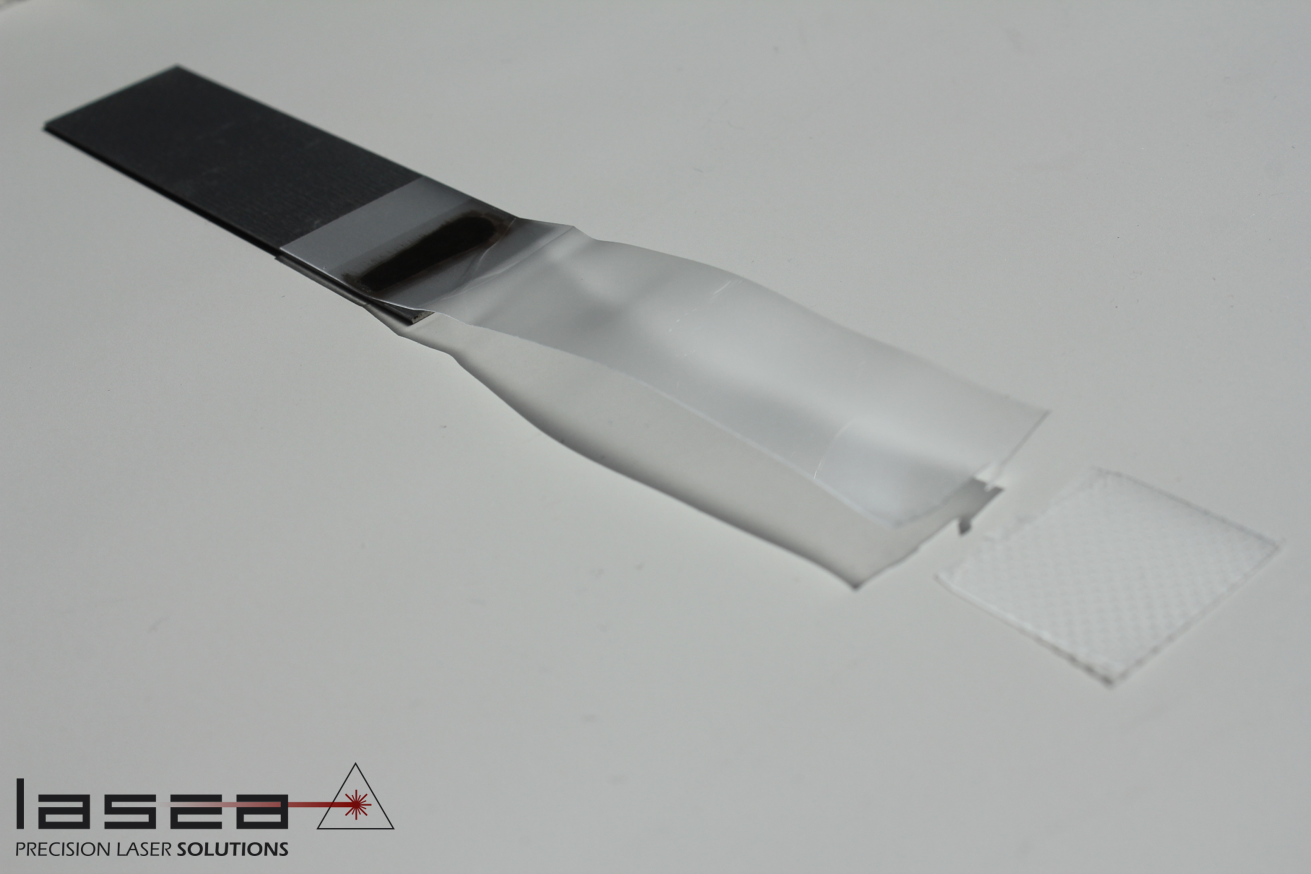LASEA uses a hybrid welding process to optimize ESSIAL samples
The study of the hybrid metal/polymer weld on flat samples will be used to validate the concept of isolated assembling of the magnetic circuit. The objective of ESSIAL is to develop a new innovative technique for the insulation of magnetic sheets in order to eliminate any damage on the magnetic properties due to additional mechanical actions (riveting, crimping, classical metal-metal welding …), or to reduce the heating created during the application of the insulating material.

Picture1: micro-structuring performed using an ultra-short pulse laser (methodology patented by LASEA)
The welding process patented by LASEA and Andaltec gives the possibility to pressurize a polymer with a metal in order to have a close contact between the two samples, and thus to facilitate the heat transfer during laser welding.
In a second step, the laser beam (continuous laser) passes through the polymer, which is transparent to the wavelength of the laser beam, heating the metal part. By thermal conduction, the polymer melts at a temperature which is higher than the maximum working temperature but below temperatures that could damage the magnetic properties, and fills the micro-structures present in the metal. After cooling, we obtain a natural tightening system for welding the polymer to the metal part.

Picture 2: hybrid welding that withstood a tensile test
With this process, we get an excellent weld because the rupture of the polymer is carried out without detachment from the welded zone (see image above). At the end of the process, we have a weld that is more resistant than the polymer's resistance itself.

